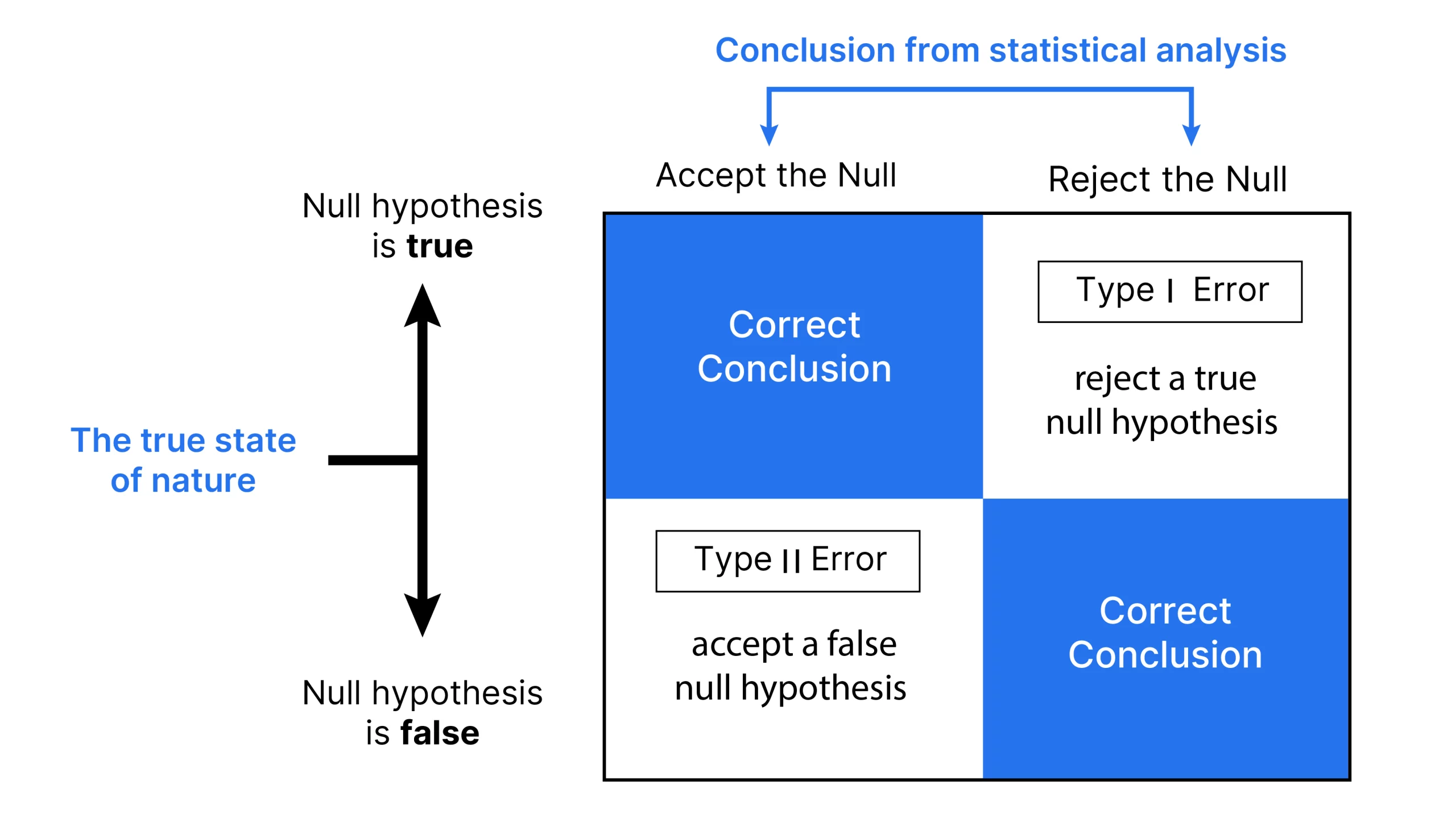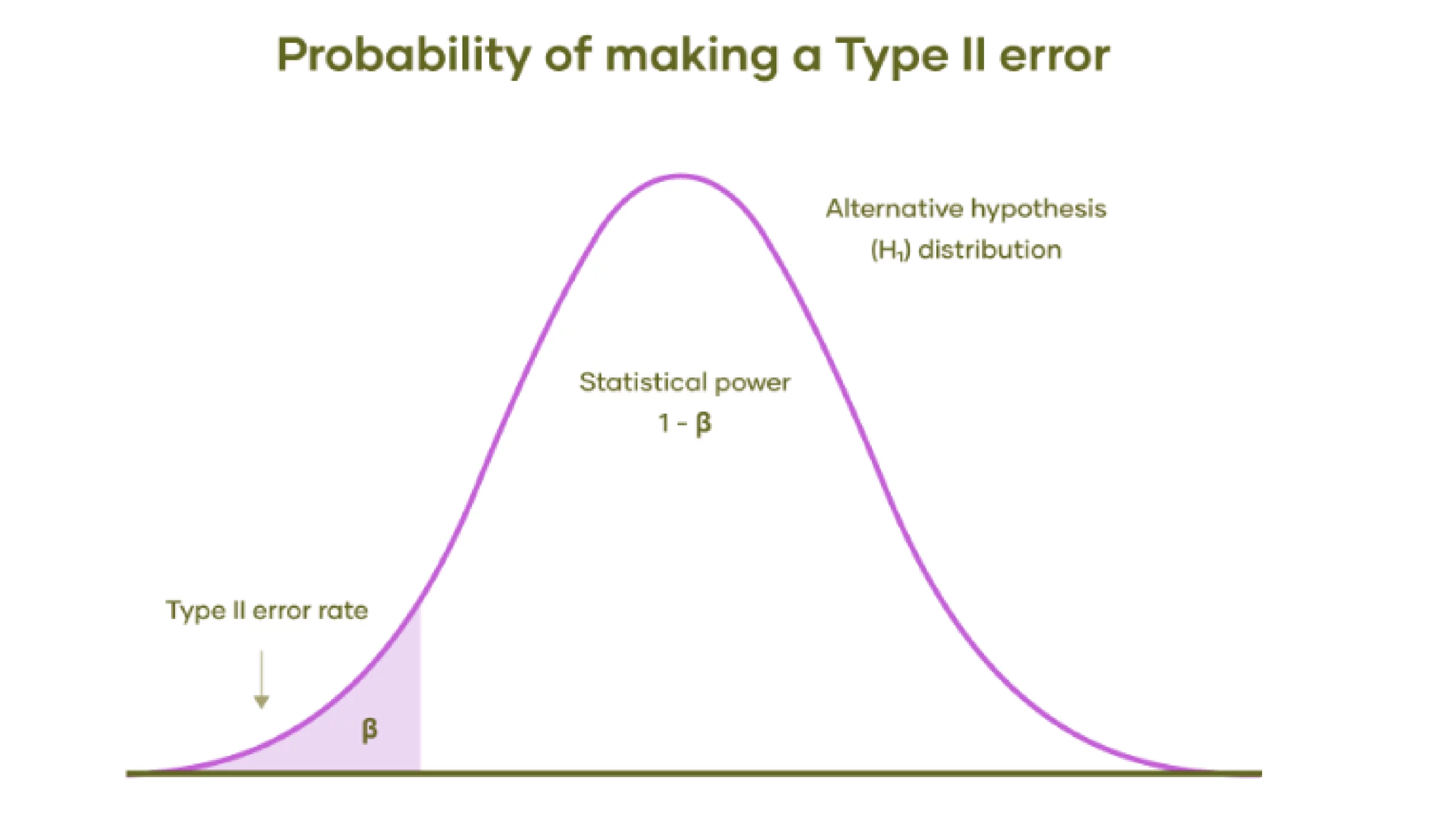 Technology peripherals
Technology peripherals
 AI
AI
 What's the Difference Between Type I and Type II Errors ? - Analytics Vidhya
What's the Difference Between Type I and Type II Errors ? - Analytics Vidhya
What's the Difference Between Type I and Type II Errors ? - Analytics Vidhya
Understanding Type I and Type II Errors in Statistical Hypothesis Testing
Imagine a clinical trial testing a new blood pressure medication. The trial concludes the drug significantly lowers blood pressure, but in reality, it doesn't. This is a Type I error – a false positive. Conversely, if the drug does lower blood pressure, but the trial fails to detect this due to limitations like a small sample size, that's a Type II error – a false negative.
These examples illustrate the critical role of Type I and Type II errors in statistical analysis. Type I errors (false positives) occur when a true null hypothesis (e.g., "the drug has no effect") is incorrectly rejected. Type II errors (false negatives) occur when a false null hypothesis is not rejected. While completely eliminating both is statistically impossible, understanding them is crucial for informed decision-making across various fields.

Key Concepts:
- Type I and Type II errors represent false positives and false negatives in hypothesis testing.
- Hypothesis testing involves formulating null and alternative hypotheses, selecting a significance level (alpha), calculating test statistics, and making decisions based on critical values.
- Type I errors lead to unnecessary actions (e.g., prescribing an ineffective drug).
- Type II errors lead to missed opportunities (e.g., failing to identify an effective treatment).
- Balancing Type I and Type II errors involves managing the significance level, sample size, and test power.
Table of Contents:
- The Fundamentals of Hypothesis Testing
- Type I Error (False Positive)
- Type II Error (False Negative)
- Comparing Type I and Type II Errors
- The Trade-off Between Type I and Type II Errors
- Frequently Asked Questions
The Fundamentals of Hypothesis Testing:
Hypothesis testing determines if there's enough evidence to reject a null hypothesis (H₀) in favor of an alternative hypothesis (H₁). The steps are:
- Formulating Hypotheses: H₀ (no effect/difference) and H₁ (an effect/difference exists).
- Choosing a Significance Level (α): The probability threshold for rejecting H₀ (often 0.05, 0.01, or 0.10).
- Calculating the Test Statistic: A value from sample data compared to a critical value.
- Making a Decision: Reject H₀ if the test statistic exceeds the critical value; otherwise, fail to reject H₀.

Type I Error (False Positive):
A Type I error occurs when a true null hypothesis is wrongly rejected. In a medical context, this is a false positive diagnosis. The probability of a Type I error is α (alpha), the significance level. A common α is 0.05, meaning there's a 5% chance of a false positive.

Type II Error (False Negative):
A Type II error occurs when a false null hypothesis is not rejected. In a medical context, this is a missed diagnosis. The probability of a Type II error is β (beta). The power of a test (1-β) represents the probability of correctly rejecting a false null hypothesis.

Comparing Type I and Type II Errors:
| Feature | Type I Error | Type II Error |
|---|---|---|
| Definition | Rejecting a true null hypothesis | Failing to reject a false null hypothesis |
| Terminology | False positive | False negative |
| Probability | α (alpha) | β (beta) |
| Consequence | Unnecessary actions | Missed opportunities |
| Reduction Strategies | Lower α (increases β) | Higher α (increases α), larger sample size |
The Trade-off Between Type I and Type II Errors:
There's an inverse relationship between Type I and Type II errors. Reducing one often increases the other. Larger sample sizes and increased test power can help mitigate both.
Frequently Asked Questions:
- Q: Can both errors be completely avoided? A: No, there's always a risk of both. The goal is to minimize them to acceptable levels.
- Q: What are common misconceptions? A: A lower α doesn't always mean a better test; large sample sizes don't eliminate errors; statistical significance doesn't equal practical significance.
- Q: How can test power be increased? A: Increase sample size, improve measurement precision, reduce variability, or increase the effect size (if possible).
- Q: What's the role of pilot studies? A: Pilot studies help estimate parameters for larger studies, improving the balance between Type I and Type II errors.
The above is the detailed content of What's the Difference Between Type I and Type II Errors ? - Analytics Vidhya. For more information, please follow other related articles on the PHP Chinese website!

Hot AI Tools

Undresser.AI Undress
AI-powered app for creating realistic nude photos

AI Clothes Remover
Online AI tool for removing clothes from photos.

Undress AI Tool
Undress images for free

Clothoff.io
AI clothes remover

Video Face Swap
Swap faces in any video effortlessly with our completely free AI face swap tool!

Hot Article

Hot Tools

Notepad++7.3.1
Easy-to-use and free code editor

SublimeText3 Chinese version
Chinese version, very easy to use

Zend Studio 13.0.1
Powerful PHP integrated development environment

Dreamweaver CS6
Visual web development tools

SublimeText3 Mac version
God-level code editing software (SublimeText3)

Hot Topics
 1666
1666
 14
14
 1425
1425
 52
52
 1327
1327
 25
25
 1273
1273
 29
29
 1252
1252
 24
24
 10 Generative AI Coding Extensions in VS Code You Must Explore
Apr 13, 2025 am 01:14 AM
10 Generative AI Coding Extensions in VS Code You Must Explore
Apr 13, 2025 am 01:14 AM
Hey there, Coding ninja! What coding-related tasks do you have planned for the day? Before you dive further into this blog, I want you to think about all your coding-related woes—better list those down. Done? – Let’
 GPT-4o vs OpenAI o1: Is the New OpenAI Model Worth the Hype?
Apr 13, 2025 am 10:18 AM
GPT-4o vs OpenAI o1: Is the New OpenAI Model Worth the Hype?
Apr 13, 2025 am 10:18 AM
Introduction OpenAI has released its new model based on the much-anticipated “strawberry” architecture. This innovative model, known as o1, enhances reasoning capabilities, allowing it to think through problems mor
 A Comprehensive Guide to Vision Language Models (VLMs)
Apr 12, 2025 am 11:58 AM
A Comprehensive Guide to Vision Language Models (VLMs)
Apr 12, 2025 am 11:58 AM
Introduction Imagine walking through an art gallery, surrounded by vivid paintings and sculptures. Now, what if you could ask each piece a question and get a meaningful answer? You might ask, “What story are you telling?
 How to Add a Column in SQL? - Analytics Vidhya
Apr 17, 2025 am 11:43 AM
How to Add a Column in SQL? - Analytics Vidhya
Apr 17, 2025 am 11:43 AM
SQL's ALTER TABLE Statement: Dynamically Adding Columns to Your Database In data management, SQL's adaptability is crucial. Need to adjust your database structure on the fly? The ALTER TABLE statement is your solution. This guide details adding colu
 Pixtral-12B: Mistral AI's First Multimodal Model - Analytics Vidhya
Apr 13, 2025 am 11:20 AM
Pixtral-12B: Mistral AI's First Multimodal Model - Analytics Vidhya
Apr 13, 2025 am 11:20 AM
Introduction Mistral has released its very first multimodal model, namely the Pixtral-12B-2409. This model is built upon Mistral’s 12 Billion parameter, Nemo 12B. What sets this model apart? It can now take both images and tex
 How to Build MultiModal AI Agents Using Agno Framework?
Apr 23, 2025 am 11:30 AM
How to Build MultiModal AI Agents Using Agno Framework?
Apr 23, 2025 am 11:30 AM
While working on Agentic AI, developers often find themselves navigating the trade-offs between speed, flexibility, and resource efficiency. I have been exploring the Agentic AI framework and came across Agno (earlier it was Phi-
 Beyond The Llama Drama: 4 New Benchmarks For Large Language Models
Apr 14, 2025 am 11:09 AM
Beyond The Llama Drama: 4 New Benchmarks For Large Language Models
Apr 14, 2025 am 11:09 AM
Troubled Benchmarks: A Llama Case Study In early April 2025, Meta unveiled its Llama 4 suite of models, boasting impressive performance metrics that positioned them favorably against competitors like GPT-4o and Claude 3.5 Sonnet. Central to the launc
 How ADHD Games, Health Tools & AI Chatbots Are Transforming Global Health
Apr 14, 2025 am 11:27 AM
How ADHD Games, Health Tools & AI Chatbots Are Transforming Global Health
Apr 14, 2025 am 11:27 AM
Can a video game ease anxiety, build focus, or support a child with ADHD? As healthcare challenges surge globally — especially among youth — innovators are turning to an unlikely tool: video games. Now one of the world’s largest entertainment indus



